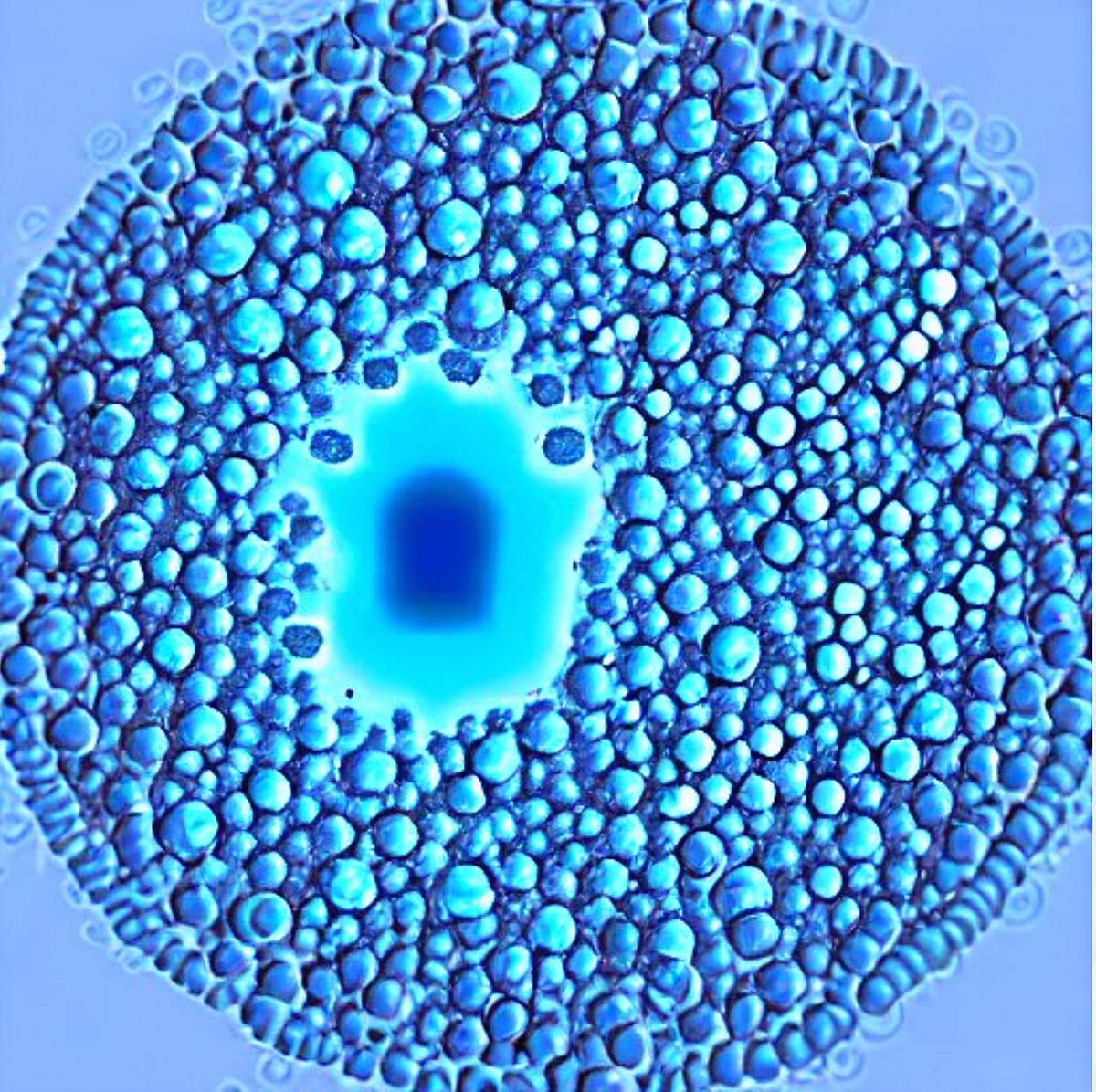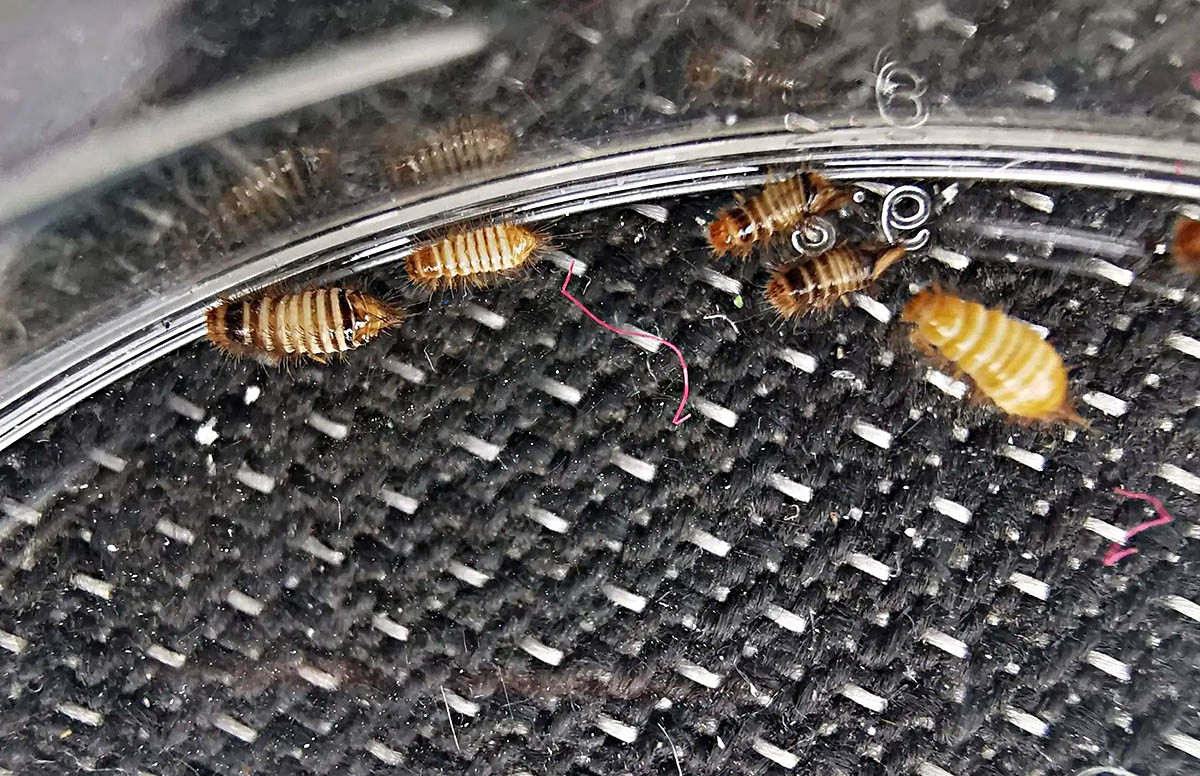Home>Garden Essentials>What Causes Endospores To Germinate


Garden Essentials
What Causes Endospores To Germinate
Modified: March 15, 2024
Discover the secrets behind endospore germination in gardens. Learn about the factors that trigger this process and how to optimize conditions for successful germination.
(Many of the links in this article redirect to a specific reviewed product. Your purchase of these products through affiliate links helps to generate commission for Storables.com, at no extra cost. Learn more)
Introduction
Welcome to the fascinating world of endospore germination! In the realm of microbiology, endospores are a unique and resilient form of bacterial life. These dormant structures, produced by certain bacteria, possess remarkable abilities to withstand harsh conditions like extreme temperatures, radiation, and lack of nutrients. However, under favorable circumstances, these dormant endospores can undergo a process called germination, transforming into actively growing and reproducing cells.
Understanding the factors that trigger endospore germination and the subsequent processes involved can provide valuable insights into the survival strategies and environmental adaptability of bacteria. In this article, we will explore the conditions required for endospore germination, the activation of germination, the germination process itself, and the factors that can influence this remarkable biological event.
So, buckle up, fellow garden enthusiasts and science lovers, as we embark on a journey to unravel the secrets behind endospore germination!
Key Takeaways:
- Endospores are like bacterial superheroes, able to withstand tough conditions. When the time is right, they transform into active cells through germination, influenced by factors like moisture, nutrients, and temperature.
- Understanding endospore germination helps us control bacteria in places like hospitals and food processing. Factors like temperature, nutrients, and moisture play a big role in this fascinating process.
Read more: What Causes An Endospore To Germinate?
Definition of Endospores
Before we continue, let’s take a moment to understand what endospores actually are. Endospores are specialized structures produced by certain types of bacteria as a survival mechanism. These structures allow bacteria to endure extremely unfavorable conditions, such as high temperatures, desiccation, and exposure to harmful chemicals.
Endospores are essentially a protective casing that encloses the DNA and other essential cellular components of the bacterium. This casing provides the bacterium with the ability to withstand environmental stressors that would normally be lethal to the vegetative form of the bacteria.
Endospores are unique in their resistance to heat, radiation, and disinfectants. They can even survive for extended periods without access to nutrients. This exceptional resilience makes endospores a formidable threat in certain environments, such as hospitals and food processing facilities, where the presence of spore-forming bacteria can lead to contamination and health hazards.
It’s worth noting that not all bacteria have the ability to form endospores. Only a handful of bacterial species, known as spore-formers, possess the genetic machinery to produce these protective structures.
Now that we have a clear understanding of what endospores are, let’s delve into the conditions necessary for their germination.
Conditions Required for Endospore Germination
Endospore germination is a complex process that is highly regulated and requires specific conditions for activation. Although the exact requirements can vary depending on the bacterial species, there are some general conditions that are necessary for endospore germination to occur.
1. Moisture: Adequate moisture is crucial for endospore germination. The presence of water activates enzymes within the endospore that initiate the germination process. Without sufficient moisture, germination cannot occur.
2. Nutrients: Endospores are metabolically dormant structures, which means they do not actively utilize nutrients. However, for germination to take place, a sufficient supply of nutrients must be available to facilitate the reactivation of cellular metabolism.
3. Optimal Temperature: Each bacterial species has an ideal temperature range for germination. While some bacteria may require lower temperatures, others may prefer higher temperatures. The temperature range for germination can vary significantly among different types of endospore-formers.
4. pH Levels: Many endospore-forming bacteria have specific pH requirements for germination. Some prefer neutral pH, while others can tolerate more acidic or alkaline conditions. Maintaining the appropriate pH level is essential for successful germination.
5. Oxygen Availability: Some endospore-forming bacteria are obligate anaerobes, which means they can only germinate in the absence of oxygen. Others can germinate in both aerobic and anaerobic environments. The presence or absence of oxygen is a critical factor for the germination of these bacterial species.
It’s important to note that endospore germination is a highly regulated process that is triggered by specific signals (activators). These activators can vary depending on the bacterial species, but they often include factors such as heat, chemicals, or specific nutrients. Activators initiate a cascade of biochemical events within the endospore that lead to the activation of germination enzymes and the subsequent transformation into a vegetative cell.
Now that we have covered the conditions required for endospore germination, let’s move on to understanding the activation of germination process.
Activation of Germination
The activation of endospore germination is a critical step that triggers the dormant endospore to begin the process of transformation into an actively growing and reproducing cell. This activation step is influenced by various factors and signals present in the environment.
One common activator of endospore germination is heat. Heat can stimulate the release of specific enzymes called germinants from the endospore’s protective coating. These germinants then interact with receptors on the endospore surface, initiating a series of biochemical reactions that lead to the activation of germination.
Chemicals and nutrients can also act as activators for endospore germination. For example, certain amino acids or sugars can trigger the release of germination-associated enzymes from the endospore, leading to the initiation of the germination process.
In some cases, mechanical disruption caused by physical forces or abrasion can activate germination. This physical activation can occur through processes like grinding, shaking, or exposure to harsh environmental conditions. The mechanical stress breaks down the protective coating surrounding the endospore, allowing germination to proceed.
It’s important to note that different bacterial species may have specific activators that are unique to their germination process. These activators can include specific chemicals, enzymes, or environmental cues that are tailored to the specific needs of the bacterium.
Once the activation step occurs, the endospore enters the germination process, which involves a series of sequential events that ultimately lead to the emergence of a vegetative cell.
Now, let’s explore the germination process in more detail.
Endospores germinate in response to environmental signals such as nutrients, temperature, and pH. Understanding these triggers can help in controlling their growth.
Germination Process
The germination process of endospores involves a sequence of events that transform the dormant endospore into an actively growing and metabolizing cell. While the specific details of the germination process can vary among different bacterial species, there are some general stages that are common to most endospore-forming bacteria.
1. Activation: As we discussed earlier, the activation step triggers the release of germination-specific enzymes from the endospore’s protective coating. These enzymes break down the structures that maintain the endospore’s dormancy and initiate the germination process.
2. Resuscitation: During this stage, the germinating endospore undergoes rehydration as it absorbs water from the surrounding environment. The uptake of water activates various metabolic processes within the endospore, including the resumption of protein synthesis and the repair of damaged cellular components.
3. Outgrowth: In the outgrowth stage, the endospore begins to elongate and develop into a vegetative cell. The newly formed cell synthesizes essential molecules, such as nucleic acids, proteins, and other cellular components, to support its growth and metabolism.
4. DNA Activation: One crucial aspect of endospore germination is the reactivation of the endospore’s DNA. The dormant endospore contains a condensed and protected form of its genetic material. During germination, the DNA becomes decondensed and accessible for transcription and replication, allowing the cell to undergo genetic expression and reproduction.
5. Vegetative Growth: As the vegetative cell continues to grow and divide, it enters the phase of active metabolic activity. The cell utilizes nutrients from the surrounding environment to fuel its growth and produce energy via various metabolic pathways.
It’s important to note that the germination process can be reversible under certain conditions. If the environmental conditions become unfavorable or nutrient availability diminishes, the vegetative cell may revert back to the dormant endospore form, entering a state of quiescence until more favorable conditions are restored.
Now that we have explored the germination process, let’s move on to understanding some of the factors that can influence endospore germination.
Read more: What Is Germinate
Factors Influencing Endospore Germination
Endospore germination is influenced by various factors that can impact the timing and efficiency of the process. These factors play a crucial role in determining when and how endospores transition from a dormant state to an active, vegetative state. Let’s explore some of the key factors influencing endospore germination:
1. Temperature: Temperature is a critical factor that can significantly influence the germination process. Different bacterial species have specific temperature requirements for optimal germination. Higher temperatures can accelerate germination, while lower temperatures can slow it down or even inhibit it. Understanding the temperature preferences of the specific endospore-forming bacteria is important for controlling their germination in various settings.
2. Nutrient Availability: The availability of nutrients in the environment plays a crucial role in endospore germination. A nutrient-rich environment provides the necessary building blocks for the germinating endospores to resume metabolic activities and transition into vegetative cells. Limited nutrient availability can delay or even prevent germination in some cases.
3. Moisture Levels: Adequate moisture is essential for endospore germination. Moisture triggers the activation of germination enzymes and allows for the rehydration and metabolic reactivation of the endospore. Insufficient moisture can delay or inhibit the germination process, as the endospores remain in a dormant state until suitable moisture conditions are met.
4. Chemical Factors: Various chemicals in the environment can influence endospore germination. This includes chemicals present in the activation process, such as specific amino acids or sugars that act as germinants. Other chemicals, such as antimicrobial compounds or disinfectants, can either promote or inhibit germination depending on their concentration and properties.
5. pH Levels: The pH of the surrounding environment can impact endospore germination. Different bacterial species have specific pH ranges at which germination is most favorable. Deviations from these optimal pH levels can either delay or inhibit germination, affecting the overall efficiency of the process.
6. Oxygen Availability: Some endospore-forming bacteria can only germinate in the absence of oxygen, while others can germinate under both aerobic and anaerobic conditions. The availability or absence of oxygen in the environment can influence the germination behavior of these bacterial species.
7. Environmental Cues: Environmental cues, such as light, pressure, or specific signals unique to a particular bacterial species, can also influence endospore germination. These cues may have evolved as adaptive responses for the bacterium to sense favorable conditions for germination and subsequent growth.
Understanding the factors influencing endospore germination is crucial for managing and controlling the growth of endospore-forming bacteria in various applications, such as food processing, healthcare settings, and industrial processes.
Now, armed with this knowledge, we can appreciate the resilience and adaptability of endospores, and use it to our advantage in dealing with these unique bacterial structures.
Conclusion
Endospores are fascinating and robust structures produced by certain bacterial species as a survival mechanism. These dormant structures enable bacteria to withstand inhospitable conditions and remain viable for extended periods. However, when the right conditions arise, endospores can undergo germination, transforming into actively growing and metabolizing cells.
Through the activation of germination, endospores break their dormant state and enter a sequence of events that lead to the emergence of vegetative cells. This process is influenced by factors such as temperature, nutrient availability, moisture levels, chemicals, pH, oxygen, and environmental cues. Understanding these factors is critical for managing and controlling the germination of endospores in various settings.
The germination process involves stages such as activation, resuscitation, outgrowth, DNA activation, and vegetative growth. Each stage is tightly regulated and requires specific conditions and biochemical reactions to occur. This process allows the endospores to re-establish their metabolic activities and resume growth and reproduction as active bacterial cells.
Endospore germination is a remarkable biological phenomenon that showcases the adaptability and resilience of bacterial life. It also poses challenges in fields such as food safety and healthcare, where the presence of endospore-forming bacteria can lead to contamination and health risks.
By understanding the conditions required for endospore germination and the factors influencing the process, we can better control and manage the growth of these bacteria. This knowledge enhances our ability to develop preventive strategies and effective treatments to mitigate the impact of endospore-forming bacteria in various industries and environments.
So the next time you encounter a spore-forming bacterium, marvel at its ability to encapsulate itself in a protective endospore and wait patiently for the right conditions to unleash its potential. Endospore germination is indeed a fascinating process that sheds light on the incredible survival strategies of bacteria and their ability to adapt to diverse and challenging environments.
Frequently Asked Questions about What Causes Endospores To Germinate
Was this page helpful?
At Storables.com, we guarantee accurate and reliable information. Our content, validated by Expert Board Contributors, is crafted following stringent Editorial Policies. We're committed to providing you with well-researched, expert-backed insights for all your informational needs.















0 thoughts on “What Causes Endospores To Germinate”